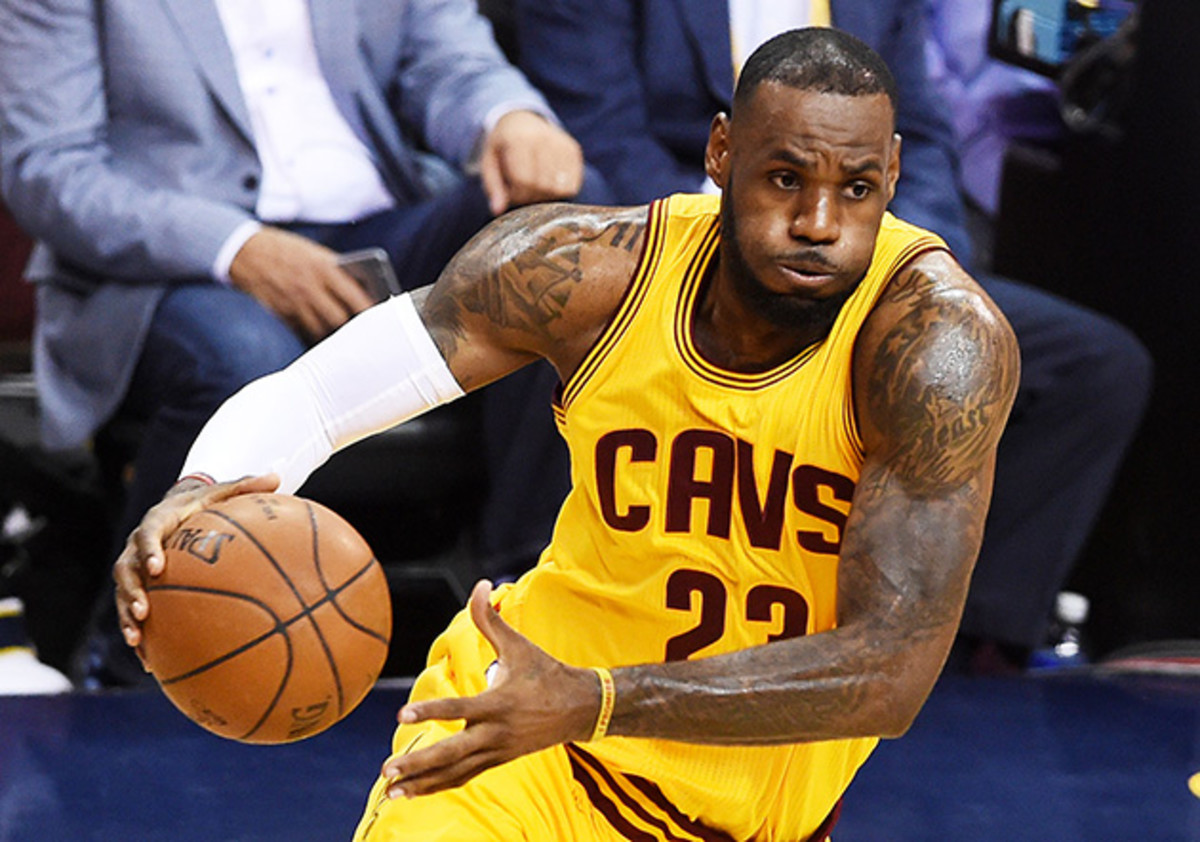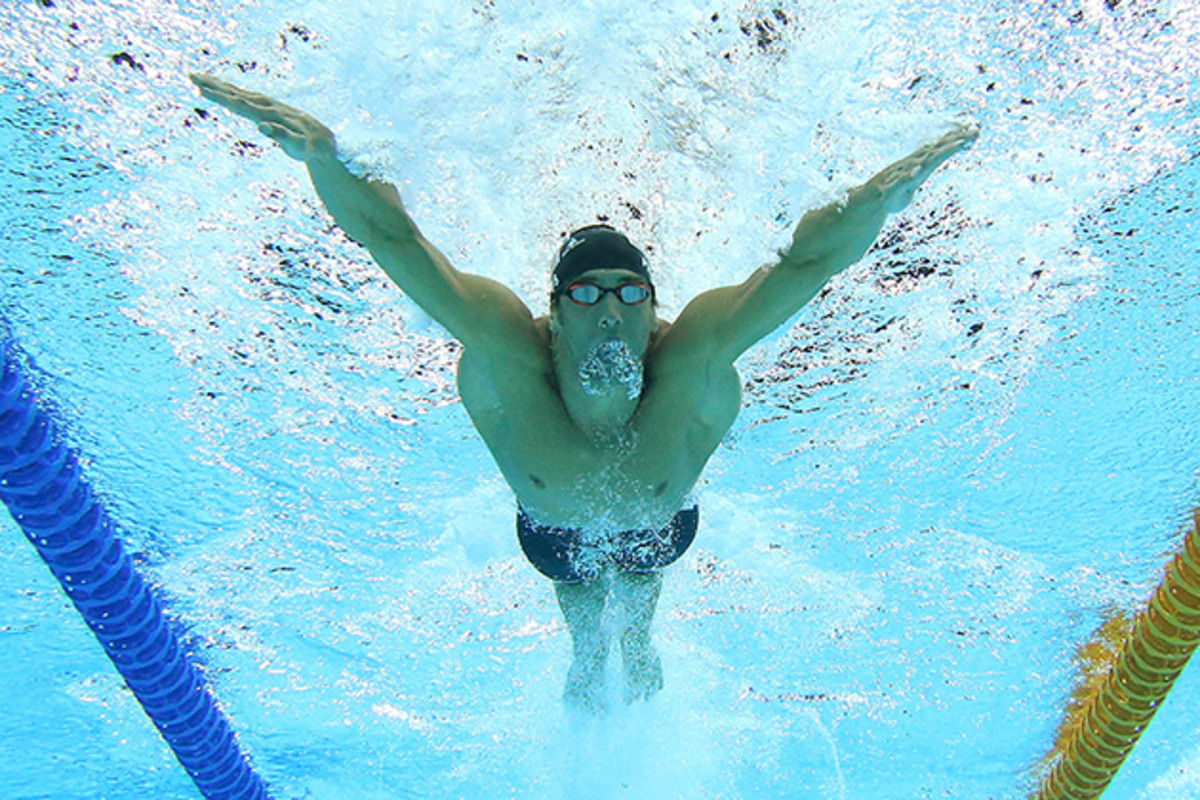Tech Talk: A wearable for elite athletes like LeBron James and Michael Phelps

LeBron James and Michael Phelps are two of the top athletes in the world who have reached the elite level where their every movement is measured and analyzed by performance trainers. Every calorie spent, every calorie replenished, sleep patterns, heart rates and more. Athletes generate mountains of data, really, and trainers need to sift through what is important to monitor their clients' specific health.
“You get information every day and if you’ve done a good job as a sport coach or, as in my case, a sport scientist, of tracking what they did the day before, you can start to after a while attach numbers to the training and see conclusions with the outcomes,” says Keenan Robinson, the trainer for Phelps. And that 24/7 personalized data is exactly why Robinson and Mike Mancias, LeBron's trainer in Cleveland, and others are gravitating towards the new Whoop system.
What is Whoop?
In short, Whoop is a wearable activity tracker. A wrist-worn strap designed to always be on collects more than 150 megabytes of physiological data per day based on tracking heart rate, heart rate variability, skin conductivity, ambient temperature, accelerometery and motion. The data streams via Bluetooth to the system’s analytics platform to better dissect intensity, recovery and sleep performance. All this information is viewable by coaches and trainers to watch for overtraining and quality of recovery.
“Elite athletes require the highest level of body awareness,” says Whoop CEO and founder Will Ahmed. “Given the slim margin between success and failure, it’s surprising that most athletes don’t really understand what they’re doing to their bodies. We built a system that is always on: continuously measuring the nuances of an athlete’s strain and recovery throughout the day.”
Who’s using it?
Robinson uses Whoop with his elite swimmers—Phelps has used it—and Mancias uses it in his business, including with LeBron. Whoop works with teams across all five major North American sports leagues, Olympic teams and top collegiate programs.
For Mancias he wants as many people associated with an athlete aware of the data. “We are all working for the same goal, the championship,” he says. “If there is more collaboration between doctors, trainers and therapists it can only be beneficial.”

Where’s the benefit?
Robinson says he wants as much data as possible, allowing him to match the numbers important to him as a swimming coach to his athletes. “The most important numbers generated for swimming were the various sleep readings and heart rate variability (figures) that I could individually tailor to an athlete’s training and response to training,” he says. “It wasn’t some arbitrary high, medium, low.”
Using Whoop over time allows Robinson to draw conclusions and parallels between types of training and an athlete’s ability to recover and perform. “We use it on a day-to-day basis with our athletes,” Robinson says. “That’s where it is most effective.”
Mancias says athletes want to maximize the resources around them to better recover. “How can I bounce back from yesterday’s workout or game,” he asks. “The algorithms are set to give you a score, a recovery score, if you will, to give athletes, coaches and trainers an idea of where the athlete is in regard to physical stress.”
And just like Robinson, Mancias says the sleep monitoring aspect proves important to both give a custom baseline, but also see how daily activities impact recovery.
How does Whoop change training?
Whoop offers a tool “to serve as a guide, to give you an idea of what to plan for the next day.” Mancias wants to monitor a player’s heart rate throughout the day and when the athlete is in intense workouts so he better understands every training session.
Once an athlete sets threshold data—everything from heart rate patterns to sleep patterns—coaches can track those figures over weeks to monitor high exertions and active recovery.
“We can see whether their body is going into a metabolic overreaching state or if the nervous system is under recovered and go in and make adjustments in the weight (for workouts),” Robinson says. “It makes your weekly plan and each one of your cycles a little bit more accurate.”

What’s the future of activity tracking?
For Phelps, his team knows his body inside and out. Even in 2007, during the world championships where he went five-for-five in world records while swimming competitively twice per day, his team was taking blood during training cycles to see how his body was responding to different levels of training. If you don’t do everything you can to know your athlete’s physical abilities and make adjustments off that, Robinson says you’re a “dinosaur.”
But knowing the individual need of your athlete while not employing a one-gadget-fits-all approach appeals to Robinson. “That is why the Whoop is such a unique product,” he says. “It allows you to extrapolate the information based on an individual sport discipline. You have to have a firm and sound idea of what you are trying to extract from this information.”
Every point of data has a place when training elite athletes. Coaches just want help tracking it all and dissecting it down to a usable state.
Tim Newcomb covers stadiums, sneakers and training for Sports Illustrated. Follow him on Twitter at @tdnewcomb.
